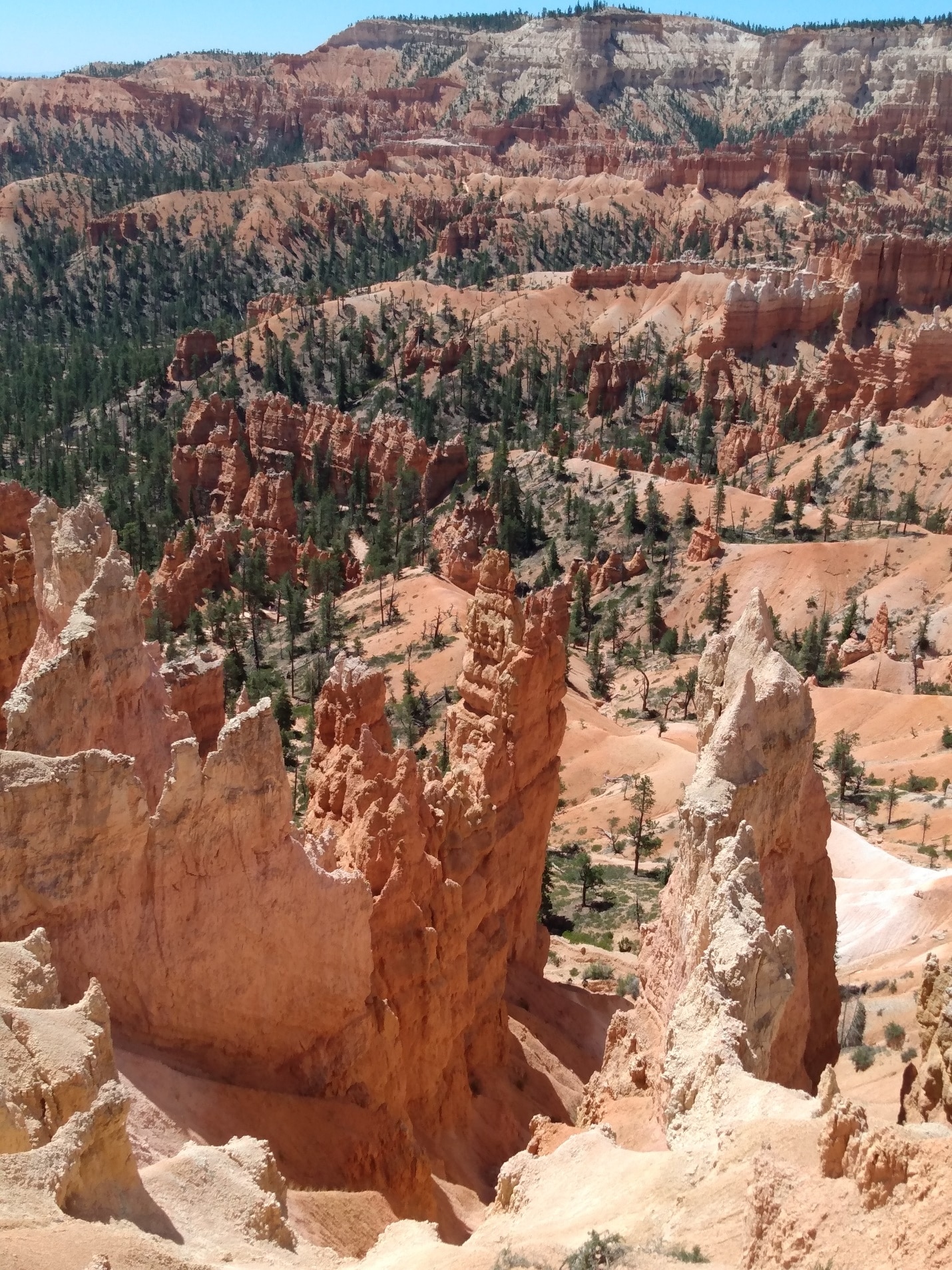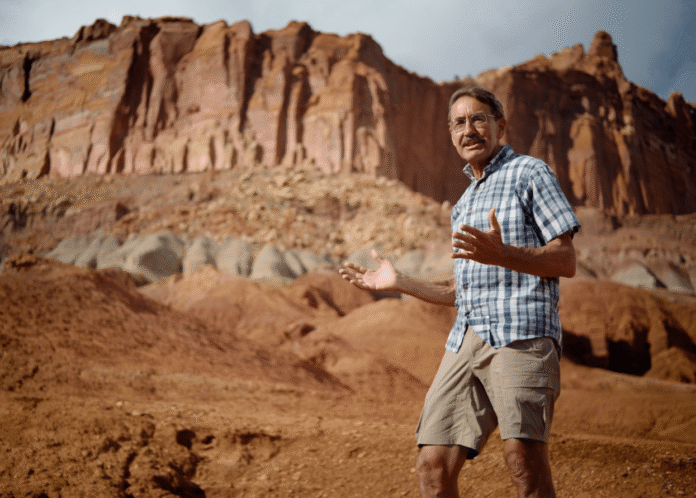
Earlier this month, I enjoyed five days giving dozens of short lectures on astronomy, not in a classroom, but on location at multiple sites in and around Capitol Reef and Bryce Canyon National Parks. As part of the development of an online introductory astronomy course through CampusEdu, two professional videographers met me in southern Utah to film mini-lectures ranging from Earth and solar-system design to evidence for dark matter.
We filmed in the bright sunshine on the edge of the high precipice of the Bryce Canyon amphitheater, at over 8,000 feet elevation, overlooking millions of years of crazily eroded red rock “hoodoos.” Our locations also included night-time shoots around a campfire, while walking along a refreshing stream flowing through a thirsty canyon, and at the base of massive sandstone cliffs etched with thousand-year-old Native American petroglyphs.
 Photo credit: Eric Hedin.
Photo credit: Eric Hedin.Let’s Stop Here
As we drove near Capitol Reef, a particularly desolate landscape almost devoid of visible plant growth caught my attention. I said to the film crew, “Let’s stop here and film, and I’ll talk about Mars, in contrast to Earth.” The setting proved ideal to discuss how the most barren-looking place on Earth is in reality a paradise compared to any part of the Martian surface.
The park Visitor Center calls attention to fragile “biological soil crusts” throughout the area, slowly formed by cyanobacteria acting on barren dirt. As described by the National Park Service, “The dirt is alive! Biological soil crust is made up of living organisms that clump soil together.”
Living soil is a key feature that distinguishes Earth’s surface from the “regolith” covering the next most Earth-like planet yet discovered — Mars. On Earth’s continents, cyanobacteria plus water produce fibers that
join soil particles together, creating a thick layer of soil that’s resistant to erosion. This layer acts like a sponge, absorbing and storing water. Over time, lichen, moss, and other organisms grow onto the soil as well. Together, these organisms create a continuous living crust.
In stark contrast, as I noted in an earlier EN article, quoting David Szondy:
Mars is covered in a blanket of loose, dust-like material called regolith. Think of it as Martian sand. The regolith contains few nutrients, not enough for healthy plant growth, and it hosts some nasty chemicals called perchlorates, used on Earth in fireworks and explosives.
The topsoil is still, for all practical purposes, utterly dry due to the lack of free water. Worse, scientists believe that organics can’t survive in the surface soil [on Mars]….
One of the most memorable sites we visited was the Mossy Cave trail in Bryce Canyon National Park. While not as visually overwhelming as many of the Canyon’s epic vistas, this trail followed a swift stream of cool, clear water flowing through a narrow canyon. The trail ended near a waterfall, refreshing and delightful to our every sense.
 Photo credit: Eric Hedin.
Photo credit: Eric Hedin.Essential for Life
Liquid water moving across the surface of the planet is essential for life as we know it on Earth. Without this miracle, Earth’s habitability would be mightily reduced. Where we encountered the Mossy Cave stream was thousands of feet above sea level and hundreds of miles from the nearest ocean — a phenomenon requiring a fully functioning hydrological, or water, cycle.
Design parameters for Earth’s water cycle abound, not only in the molecular properties of water itself, but in the position of the Earth in its orbit around the sun, the rotation rate of the Earth, Earth’s surface gravity, and its atmospheric composition. While filming along the trail to the waterfall, we met dozens of young people on an outing, and one girl I spoke with declared her enthusiasm for astronomy. As we talked, she expressed her interest in learning some of the fascinating aspects of the universe that point to intelligent design.
Pondering the Stars
Discussing astronomy in the canyonland landscape of the Southwest has a well-established precedent. Ancient peoples have lived in this area for thousands of years, and archeological findings indicate the significance of astronomy to their cultures. Pondering the stars has a long history — one that still connects to our interest in fundamental questions of existence today.
The cosmologists of today are asking the questions people asked for thousands and thousands of years, sitting around a campfire at night, as they wondered about the meaning of those flickering but eternal stars overhead and the fragile, transient life around them.
J. McKim Malville, A Guide to Prehistoric Astronomy in the Southwest (Boulder, CO: Johnson Books, 2008), 3.
The most poignant evidence of design intervention on planet Earth is certainly life itself. During our filming of astronomy talks in the parks, we constantly encountered living beings, conscious and curious. Some would actively engage us with questions while others would just ask if they could sit awhile and listen to a scientist describing the wonders of the heavens.






